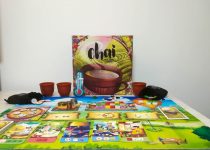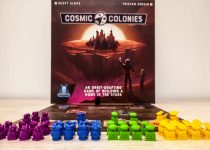Cooper Island – Journal Entry #29
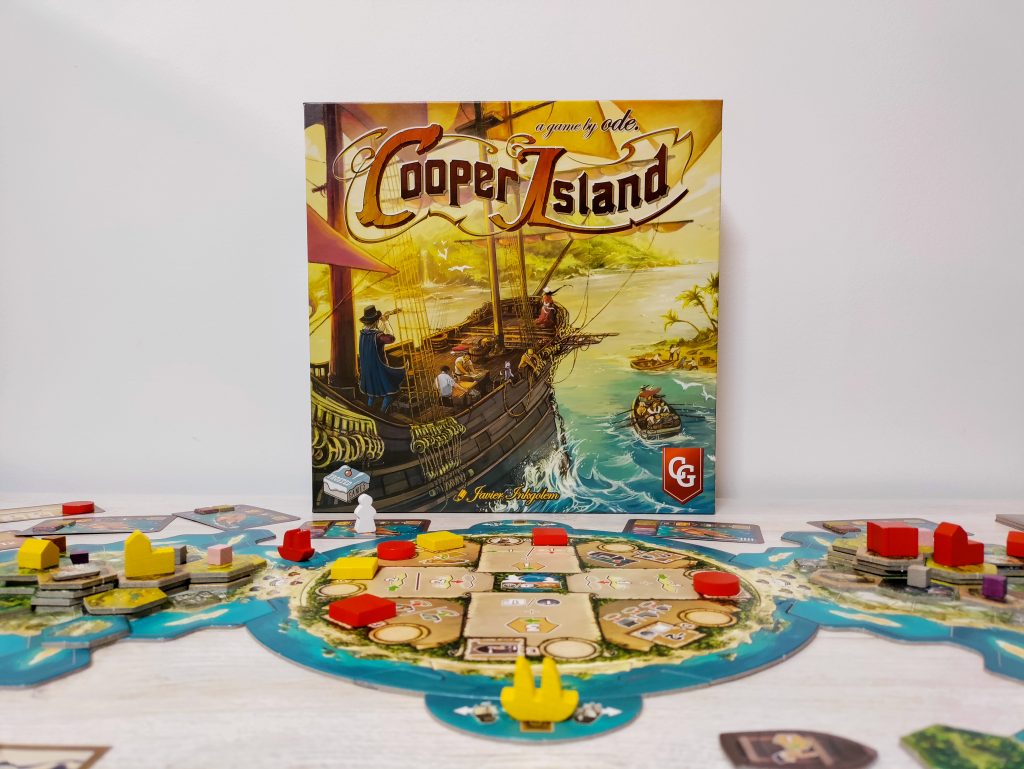
Cooper Island is a worker placement euro game that my friends described as a “brain burner”. It is by far the most complex game in my collection, but at the same time, it is one of the games at the end of which I feel the most satisfied with the decisions I made during gameplay. It is designed by Andreas Odendahl, the same guy who designed La Granja, the 2015 winner of Jogo do Ano.
This game rewards those who play efficiently and who consider their actions very well before going further. I enjoy that a lot, because that’s exactly my style of play most of the time, as I always try to get the best result from my actions. I found it hard to find people to play it with, because everyone was either too scared to try it because of the long rulebook or because they didn’t want to get involved in a game that could take well over 2 hours. But my search for worthy opponents was worth it and I had lots of fun playing it!
Let’s explore Cooper Island
In Cooper Island, the players build their own peninsula on which they lay tiles, “discovering” more land and producing more and more resources. They can use these resources for various actions such as building statues, erecting buildings, trading them for Helm Points (Victory Points), and many other activities. There’s a wide range of actions and decisions to take on your turn and you are limited to only five rounds. You will often find yourself planning to realize that you do not have enough time to do everything you were planning for!
As I said earlier, the game plays over 5 rounds, divided into 3 phases: the income phase, the worker phase, and the clean-up phase. During the first phase, you will place an islet tile on your island and you will gain its bonus instantly. You can reactivate that island by passing over it with one of your boats in the future. During this phase, you can also generate resources by placing new tiles on your island. You can unlock more actions that you can take during this phase by getting more boats placed docked on your player board.
You can use resources from both areas when you need to, but you have to keep in mind that they are worth different based on their source. Resources located on your island have a value represented by the height of the hex they are placed on, while resources in your storage are worth 1. This means that resources kept on your island are worth much more and you should rely on them for most actions that require you to spend resources.

During the worker phase, you will start placing workers on the main board, taking actions to develop your island even further. The main board is divided into 8 areas, each representing an action that you can take using your workers. You start the game with 2 workers and you can only take an action once per round, so you will have to think very well before choosing your action because there are only five rounds in this game. You can get more workers by completing certain objectives on your player board, but be careful, as you will also have to give up on some workers to secure yourself some scoring conditions by placing them on the scoring card. Try to avoid securing a scoring condition with an advanced worker (square ones), as they are better used for advanced actions.
The third and last phase of a round is the clean-up phase, when you feed your workers, earn points and take your workers back from the main board. You can find all the steps that you have to follow during this phase on your player board. Speaking of which, the player board is divided into many areas and is pretty crowded with information. It may scare you at first, but things will get better the more you look at it. You will use this board to store your resources, check the costs of building various buildings on your island, and manage your workers, along with other stuff.
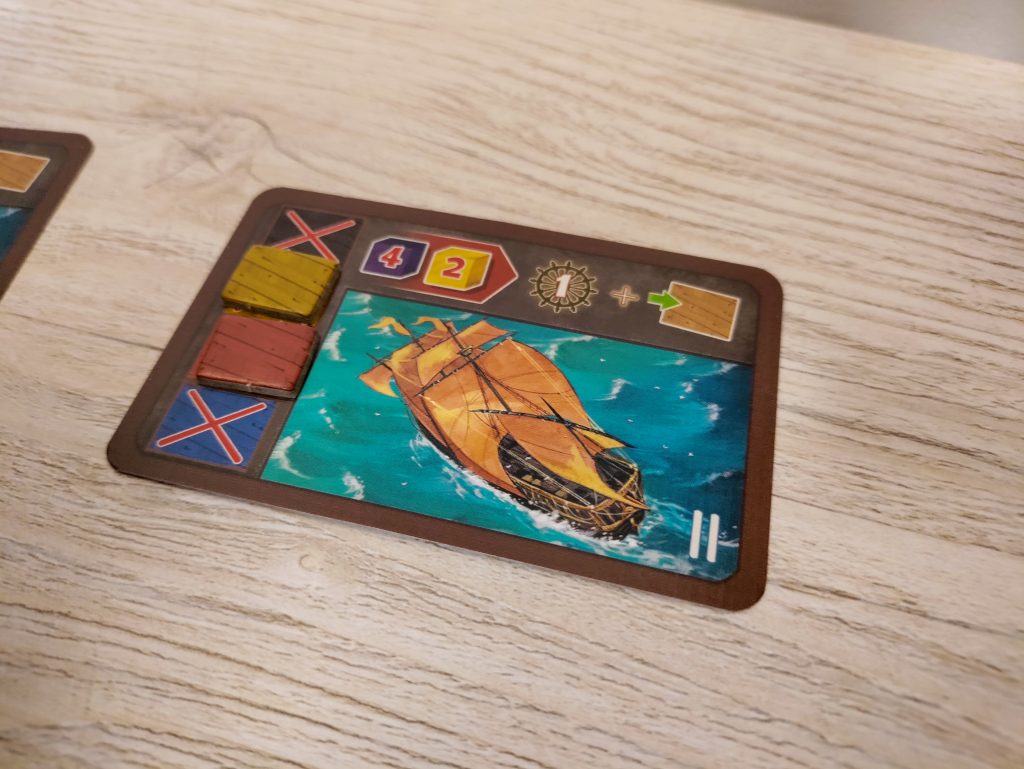
Most actions will award you Helm Points (usually 1 or 2) that you will track by moving your ships around the board. Every Helm Point acquired allows you to move one of your ships further and once every 5 Helm Points you will get a Log token that can award you resources, coins, or other bonuses.
Cooper Island, a welcome surprise
Having a 28-pages rulebook, I expected myself to have problems learning the rules and getting into the game, but I was surprised to see that Cooper Island is actually pretty easy to learn! I got hooked into the game as soon as I finished watching the first how-to-play video. There are a lot of actions to choose from on your turn and there’s a lot of stuff going on, but once you learn the ropes everything will start making more sense, and after a couple plays you will be able to teach the game easily without needing much (if any) aid from the rulebook.
The resource generation mechanism in Cooper Island is quite different from other worker placement games that I’ve tried in the past (such as Venice and Stone Age). Getting resources of different values by discovering areas of your island and upgrading the resource output of a spot by stacking tiles on it felt really unique to me. The fact that resources on your island are worth more than those in your storage simply improves this system even more. It forces you to find the perfect balance between your resources while managing the growth of your island. You sometimes face situations when you get stuck with useless resources in your storage and getting rid of them can be a pain. It is one of those games that awards efficient play and makes you want to play it again and again to try and get the best out of the five rounds.
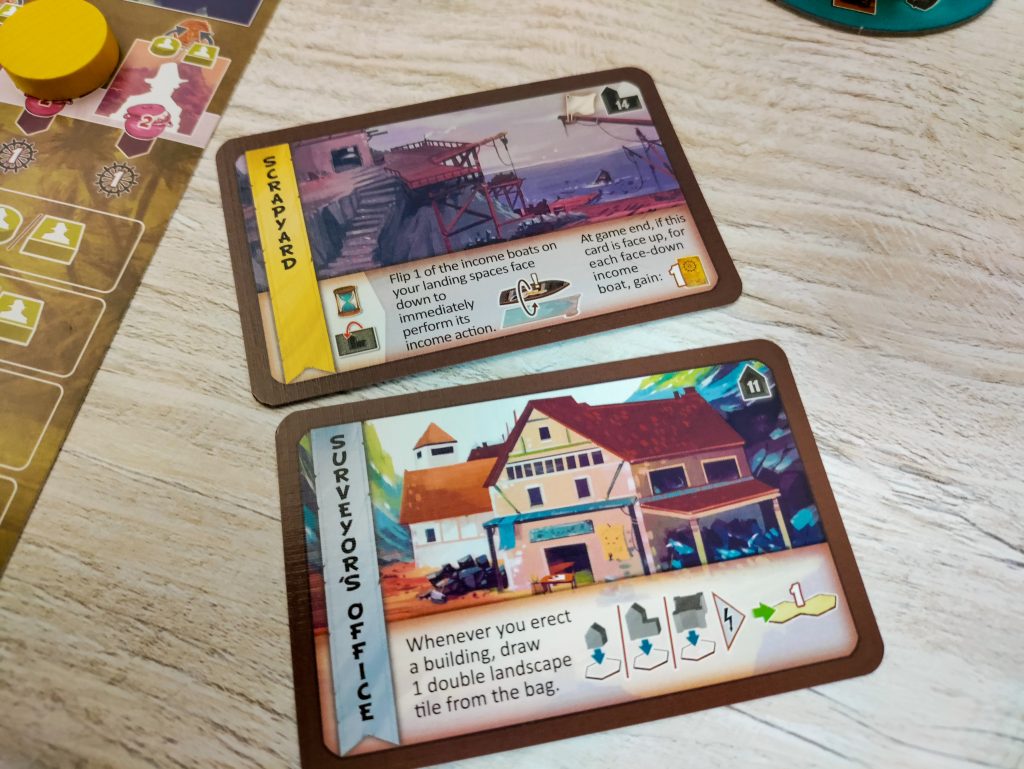
What struck me the hardest in my first game was the low scores that we ended up with. It was a 2 players game and our final scores were 12 and 20. We did not focus too much on strategizing, as we mainly wanted to learn how to play and discover the game. We did not expect our final scores to be this low but after some research, I found out that low scores actually common for Cooper Island, especially if you focus on multiple scoring ways instead of just 1 or 2.
It’s really interesting to see how different strategies will lead to very different outcomes. I found out that going for statues and the last 3 spots on your island is a really good strategy to earn points, of done well. My best score using this strategy was 32 and I am very proud of those points because it was a 2 players game that took 3 hours and the result had to be worth it. Going for buildings also proved to be pretty good, especially if combined with statues. We also found some strategies that do not reward you well in the long run, such as going for boats (although you get many actions available when a new round starts) or trading resources (they take too long to gather most of the time).
Visually, Cooper Island is a gorgeous game and it got me from the very beginning. The artwork is beautiful, very thematic, and it will attract other people’s attention for sure if you’ll play it at a local pub or any event. Everything in this game is represented by different icons on the components and you may find them overwhelming and hard to understand at first, but you shouldn’t worry too much about it, as you will get used to them after your first play.
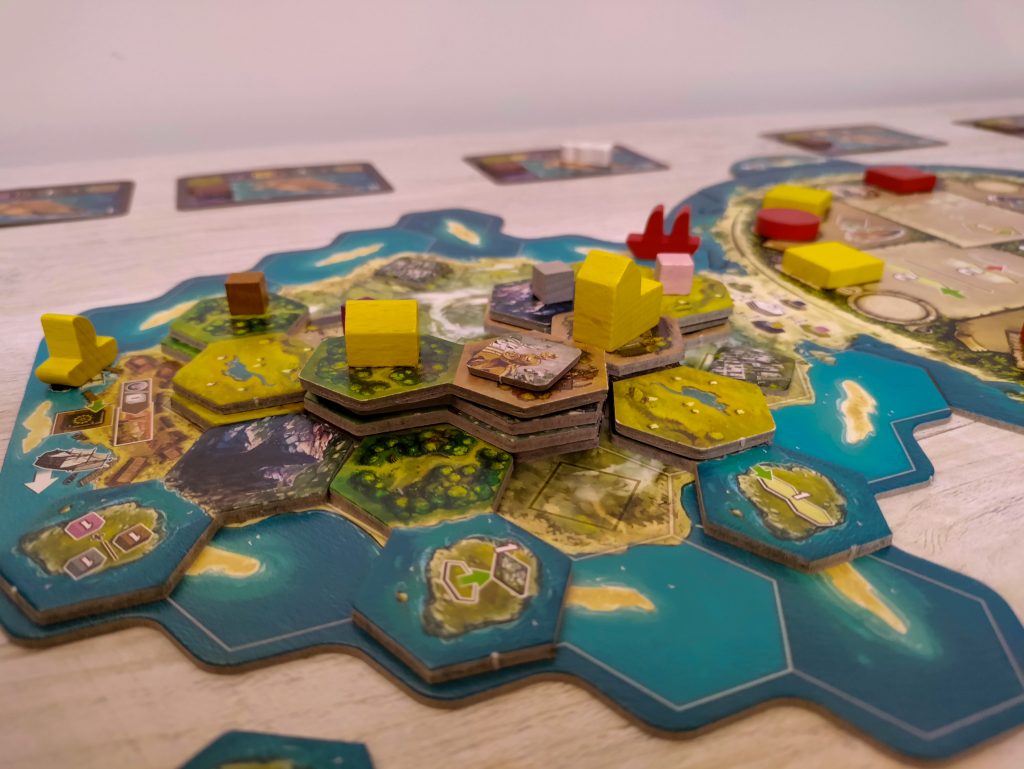
The only issue I found regarding Cooper Island is replayability. The setup is almost always the same, except for the royal orders (scoring cards) and for the starting tiles that each player gets (although the variety in these tiles is not that big anyway). This is not that big of a problem for me, because I enjoy games where the main goal is to be efficient, but I think that some people may consider this a problem. However, your decisions while playing will often lead to different outcomes by the end of the game, so this issue is not that big.
Conclusion
For me, Cooper Island is a fantastic game. It made my brain tingle like no other game did before and it will stay in my collection for good. Many people will tell you that it is a heavy game and that you should avoid it if you didn’t play any such games before, and I agree with them to an extent, but at the same time I believe that you shouldn’t be scared to try and don’t get disappointed if your first match is not that overwhelming. Cooper Island is a game whose beauty you will discover over the course of multiple plays.
Useful info
Designer: Andreas “ode.” Odendahl
Publisher: Capstone Games
Players: 2-4
Time: 120-150 min
Times played: 5 (at 2 and 3 players)
Full disclosure: A copy of Cooper Island was provided by the game publisher.
Did you like the review? Follow me on my Instagram page where I post daily photos of games I play and other things. You can also support me on Patreon to gain access to various special content, such as game unboxings, first impressions, polls to decide what games to cover next, and early access to reviews!

